
New York is undoubtedly one of the best-known US states, but it’s also known for its animals. Although New York has a large urban area, it also has a vast range of fields, lakes, forests, and even mountains. These habitats are perfect for animals of all sizes to thrive in — including snakes. New York has 17 species of snakes that are made up of 14 non-venomous species and three that are venomous. While some snakes can be brightly colored, there are actually a lot of snakes that are a darker color which helps them blend into their habitat. In this article, we’ll discover the brown snakes in New York and find out which ones are dangerous!
1. Massasauga (Sistrurus catenatus)
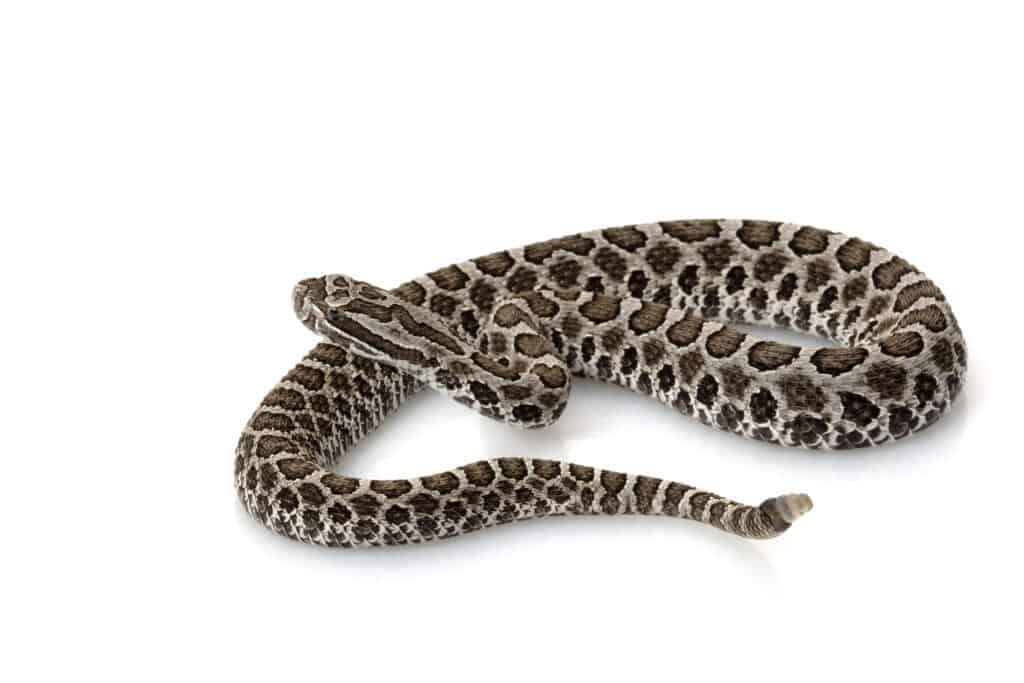
The Massasauga
rattlesnake
is one of the brown snakes in New York and it is venomous.
©fivespots/Shutterstock.com
We’ll kick off the list with a venomous snake — the Massasauga rattlesnake. Massasaugas are 24 to 30 inches long and are tan to greyish brown with large black spots along their back and three rows of smaller spots along each side. They mainly live around swamps and wetlands but they only occur in two small populations in the state — in Genesee and Onondaga counties. Massasaugas possess cytotoxic venom which is not typically as deadly as some of the other types. However, it can cause serious damage and scarring to tissue and can even result in amputation of the affected limb.
2. Northern Water Snake (Nerodia sipedon)

The northern water snake is a brown snake in New York that isn’t venomous but can still be dangerous if it bites you.
©Jay Ondreicka/Shutterstock.com
The next brown snake in New York is the northern water snake which is the most commonly found water snake in the state. Northern water snakes are widespread across New York and live in virtually any slow-moving body of freshwater. They are large snakes and can attain lengths of up to 56 inches. They are dark brown and have a series of darker crossband markings along their body. Sometimes these can be so dark that they can make the snake appear to be almost black. Northern water snakes prey on a wide range of fish and amphibians. They are not venomous but can be dangerous as they will readily bite when they are cornered or threatened. They also have an anticoagulant in their saliva which prevents the blood from clotting around wounds.
3. Worm Snake (Carphophis amoenus)

Worm Snakes typically are brown on top and have lighter coloring on their bellies. This brown snake in New York is non-venomous.
©Jason Patrick Ross/Shutterstock.com
One of the smallest snakes is the worm snake which reaches a maximum of just 13 inches. Worm snakes are brown on their dorsal side but have distinctive pink bellies. They live in woodlands and forests where they can hide underneath logs and rocks or in leaf litter. However, they are only found in a few counties in the southeastern corner of the state — particularly Long Island and in the lower Hudson Valley. Their diet consists mainly of earthworms and slugs, but they have a number of predators such as birds, foxes, and other snakes. Worm snakes are not venomous but are known for producing a strong musk scent when they are handled.
4. Eastern Copperhead (Agkistrodon contortrix)
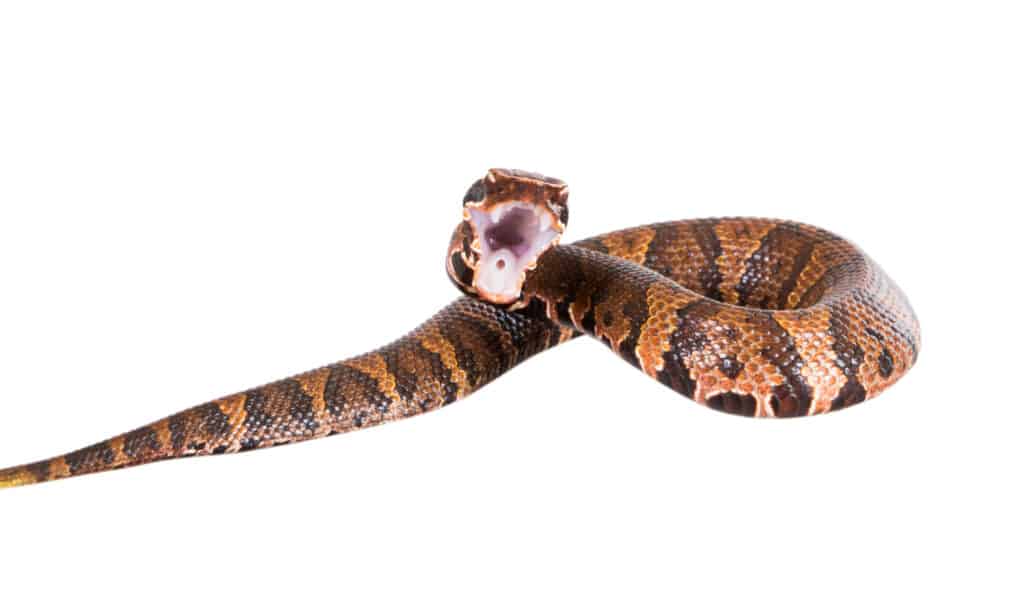
The eastern copperhead is a venomous brown snake in New York.
©IrinaK/Shutterstock.com
The next brown snake in New York is the eastern copperhead which is another venomous pit viper. Copperheads are typically 20 to 37 inches long and have pinkish-tan bodies. They also have a series of crossbands which are a darker, reddish brown but have pale colored centers. Copperheads live in a variety of habitats but tend to prefer forests and woodlands. However, they only occur in the southeastern corner of the lower Hudson Valley. Copperheads possess some of the weakest venoms of all the pit vipers and this, combined with their relatively mild nature, means that they are not particularly dangerous to adults who are healthy.
5. Queen Snake (Regina septemvittata)
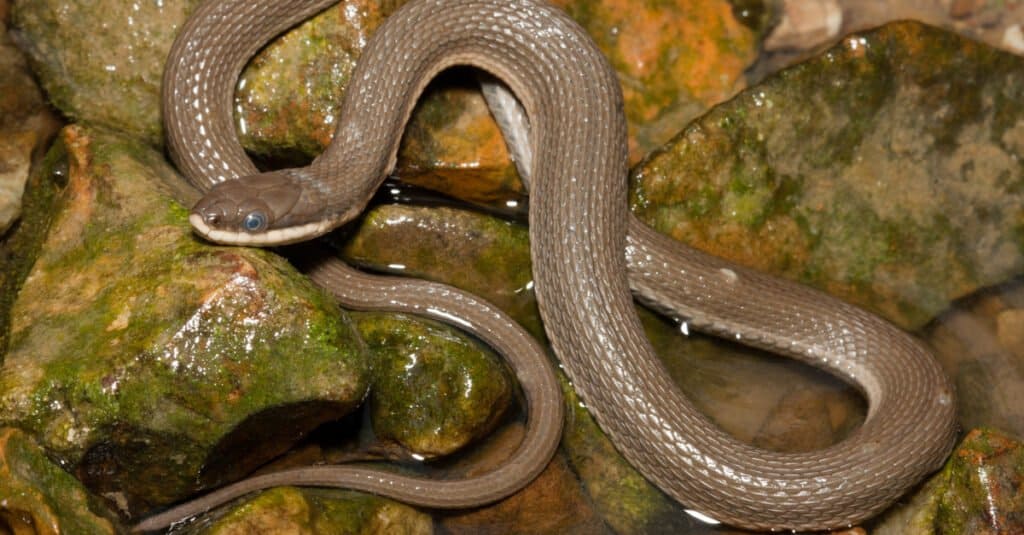
One of the brown snakes of New York is the semi-aquatic Queen snake.
©Nathan A Shepard/Shutterstock.com
Another semi-aquatic snake is the queen snake which inhabits lakes, rivers, streams, and ponds in scattered locations across the southwestern corner of the state. Queen snakes are 14 to 23 inches long and are brown with darker stripes along their belly. Although they are more visible when the snakes are juveniles, queen snakes also have three stripes along their back. They prey almost exclusively on crayfish which make up around 90% of their diet. Queen snakes are uniquely adapted to hunting their prey as they have a flattened head and a series of thickened scales on top of it and underneath their chin to protect themselves when they burrow between rocks in search of food.
6. Timber Rattlesnake (Crotalus horridus)
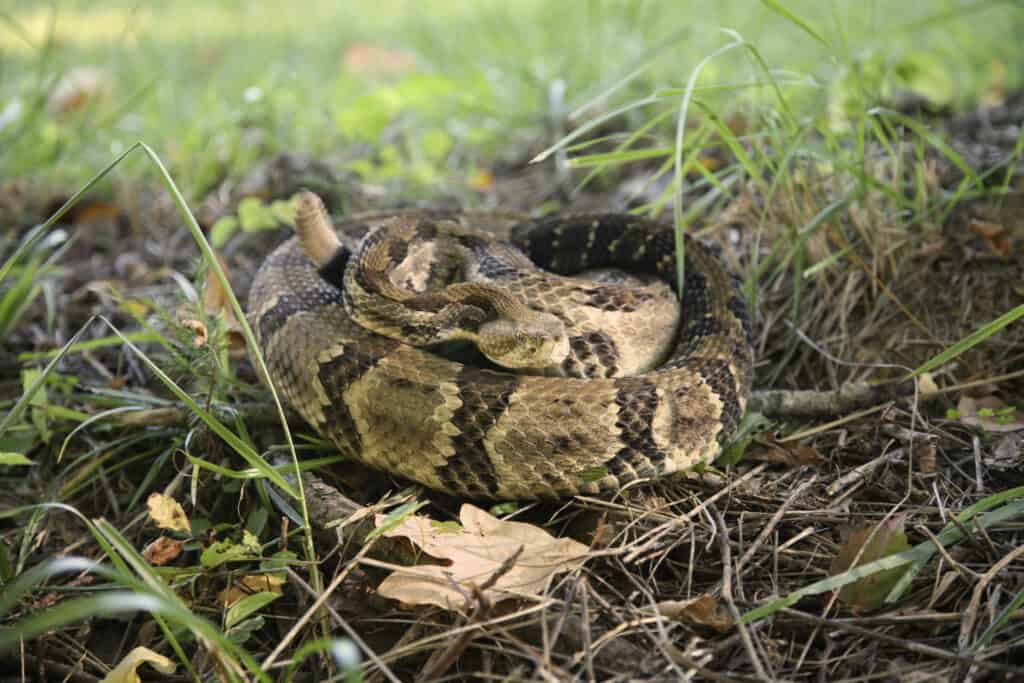
Timber rattlesnakes are extremely venomous, but they are not typically aggressive. It’s best to avoid this brown snake in New York.
©iStock.com/NajaShots
The timber rattlesnake is another venomous brown snake in New York. They are actually the most dangerous snakes in the state due to the large amount of strong venom that they possess and the long fangs that they have to inject it with. Timber rattlesnakes attain lengths of up to five feet and have heavy brown bodies with a series of dark brown to black crossband markings. They typically live in forests and on rocky hillsides, particularly where there are rocky outcrops so that pregnant females can bask in the sun. Although timber rattlesnakes were once widespread across the entire state, they are now found only in isolated populations in the southeastern region and along the edge of the Adirondacks and the Catskills.
7. Dekay’s Brown Snake (Storeria dekayi)
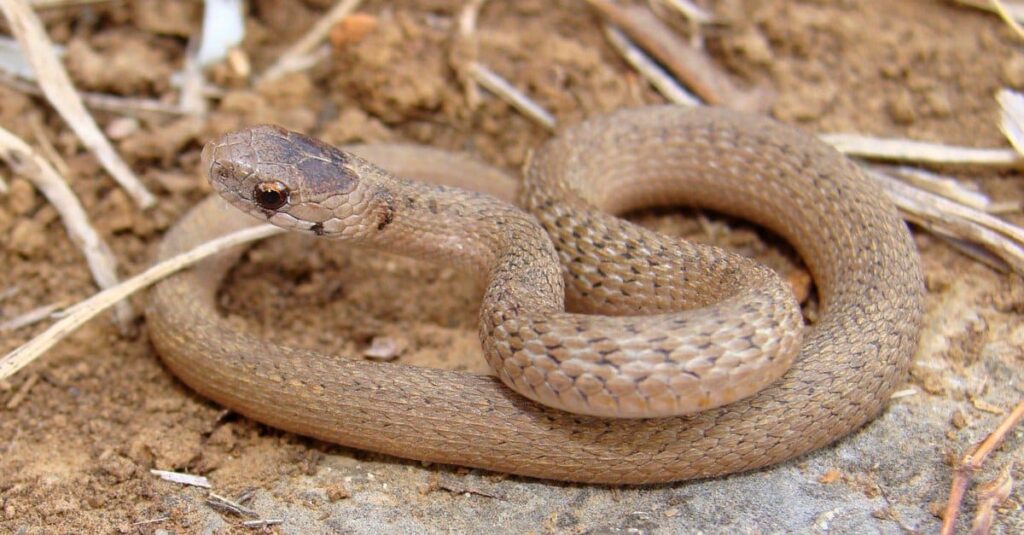
The Dekay’s brown snake in New York is harmless.
©Matt Jeppson/Shutterstock.com
With a length of only nine to 13 inches, Dekay’s brown snakes are easily one of the smallest snakes in the state. They have slender brown bodies with lighter-colored stripes on their back. They also usually have small brown spots on either side of the line. Dekay’s brown snakes are widespread across the state but prefer fairly moist habitats. They are secretive snakes and often hide in leaf litter or underneath rocks and logs. Dekay’s brown snakes are completely harmless and prey only on animals such as earthworms, slugs, and snails. However, they are preyed on by a wide range of larger animals — including other snakes.
8. Eastern Ribbon Snake (Thamnophis sauritus)

The ribbon snake is a nonvenomous brown snake in New York.
©Creeping Things/Shutterstock.com
The final snake on the list is the eastern ribbon snake which is 16 to 35 inches long and is dark brown with yellow stripes. Eastern ribbon snakes are fairly widespread across the state. They are usually found in and around a permanent source of water — particularly streams and ponds. They are capable swimmers and will regularly flee into the water when they are disturbed. Eastern ribbon snakes are not venomous and consume a variety of fish and amphibians.
The photo featured at the top of this post is © John Czenke/Shutterstock.com
Discover the "Monster" Snake 5X Bigger than an Anaconda
Every day A-Z Animals sends out some of the most incredible facts in the world from our free newsletter. Want to discover the 10 most beautiful snakes in the world, a "snake island" where you're never more than 3 feet from danger, or a "monster" snake 5X larger than an anaconda? Then sign up right now and you'll start receiving our daily newsletter absolutely free.
Thank you for reading! Have some feedback for us? Contact the AZ Animals editorial team.






